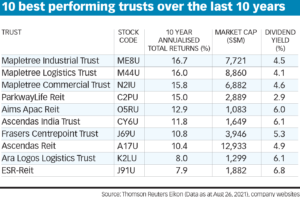
Trading in the stock exchange requires that you keep up to date with all the news and opinions. Although the news can seem overwhelming, most of it is just incremental information. You can use it to help you make informed decisions about buying or selling stocks.
There are many apps available that can help you stay on top of the latest news and opinion. Some of these apps are free, while others require a subscription fee. Some apps provide detailed news and analysis while others allow for news-based trading. These tools can help you identify trends and capture alpha.
Since its inception, the Wall Street Journal has provided market research for over 40 years. It prides itself as an impartial and objective source for financial information. It also includes stock screeners, stock research reports, and stock-picking insight from experts. It also features an active investor network. It also allows users to set their own notifications, watch full episodes on CNBC, and receive alerts when the app's closed.

Stocktwits, a free app, features Twitter-style Twitter feeds. Users can receive free articles, market news, and updates on upcoming events. They can set the notification frequency and type to send them when they are most important. They can also get alerts when stocks are moving in one direction. It's also possible to get a full subscription for a monthly fee. You can also check your notifications with the Apple watch app.
Five Minute Finance provides financial news and updates for free. It provides financial news analysis, stock futures, and real-time stock prices. The app offers interactive charts, market data, and proprietary stock rating algorithms.
Motley Fool's Rule Breakers stock-picking service includes monthly buy suggestions, education materials, and a community for active investors. They use historical data, market research, and fundamental analysis to inform subscribers about the latest stock news. They look at individual stocks as much as the entire market. They are also active on social networks, where investors can interact.
Investors who wish to trade stocks on the news are well served by Steaming News module. It allows users to filter stocks using their preferred criteria. You can also get news alerts even if the app is closed, and you can manage real-time alerts right from the app.

BMO InvestorLine Inc. disclaims liability regarding the content of its reports. But, it doesn't guarantee its accuracy or completeness. SeekingAlpha, which offers both premium content and free content, also has a stock alert feature. Its community message board is a great resource for investors and provides them with crowdsourced investing ideas. It also provides in-depth research about stocks and managed fund.
FAQ
What are the benefits to investing through a mutual funds?
-
Low cost - buying shares from companies directly is more expensive. Buying shares through a mutual fund is cheaper.
-
Diversification - most mutual funds contain a variety of different securities. One type of security will lose value while others will increase in value.
-
Management by professionals - professional managers ensure that the fund is only investing in securities that meet its objectives.
-
Liquidity is a mutual fund that gives you quick access to cash. You can withdraw your money at any time.
-
Tax efficiency: Mutual funds are tax-efficient. As a result, you don't have to worry about capital gains or losses until you sell your shares.
-
No transaction costs - no commissions are charged for buying and selling shares.
-
Easy to use - mutual funds are easy to invest in. All you need to start a mutual fund is a bank account.
-
Flexibility: You have the freedom to change your holdings at any time without additional charges.
-
Access to information – You can access the fund's activities and monitor its performance.
-
Investment advice - ask questions and get the answers you need from the fund manager.
-
Security - Know exactly what security you have.
-
Control - The fund can be controlled in how it invests.
-
Portfolio tracking: You can track your portfolio's performance over time.
-
Easy withdrawal: You can easily withdraw funds.
There are some disadvantages to investing in mutual funds
-
Limited investment opportunities - mutual funds may not offer all investment opportunities.
-
High expense ratio - Brokerage charges, administrative fees and operating expenses are some of the costs associated with owning shares in a mutual fund. These expenses eat into your returns.
-
Lack of liquidity - many mutual funds do not accept deposits. They must be bought using cash. This limits your investment options.
-
Poor customer service - there is no single contact point for customers to complain about problems with a mutual fund. Instead, you must deal with the fund's salespeople, brokers, and administrators.
-
Ridiculous - If the fund is insolvent, you may lose everything.
What is a bond?
A bond agreement is an agreement between two or more parties in which money is exchanged for goods and/or services. It is also known to be a contract.
A bond is normally written on paper and signed by both the parties. The bond document will include details such as the date, amount due and interest rate.
A bond is used to cover risks, such as when a business goes bust or someone makes a mistake.
Bonds are often used together with other types of loans, such as mortgages. The borrower will have to repay the loan and pay any interest.
Bonds are used to raise capital for large-scale projects like hospitals, bridges, roads, etc.
It becomes due once a bond matures. That means the owner of the bond gets paid back the principal sum plus any interest.
If a bond isn't paid back, the lender will lose its money.
Why is a stock security?
Security is an investment instrument whose worth depends on another company. It can be issued as a share, bond, or other investment instrument. If the underlying asset loses its value, the issuer may promise to pay dividends to shareholders or repay creditors' debt obligations.
What's the difference among marketable and unmarketable securities, exactly?
The key differences between the two are that non-marketable security have lower liquidity, lower trading volumes and higher transaction fees. Marketable securities, however, can be traded on an exchange and offer greater liquidity and trading volume. Marketable securities also have better price discovery because they can trade at any time. But, this is not the only exception. Some mutual funds, for example, are restricted to institutional investors only and cannot trade on the public markets.
Non-marketable securities can be more risky that marketable securities. They typically have lower yields than marketable securities and require higher initial capital deposit. Marketable securities are generally safer and easier to deal with than non-marketable ones.
A large corporation bond has a greater chance of being paid back than a smaller bond. The reason for this is that the former might have a strong balance, while those issued by smaller businesses may not.
Because they are able to earn greater portfolio returns, investment firms prefer to hold marketable security.
Are bonds tradeable?
They are, indeed! Like shares, bonds can be traded on stock exchanges. They have been doing so for many decades.
The main difference between them is that you cannot buy a bond directly from an issuer. You must go through a broker who buys them on your behalf.
This makes buying bonds easier because there are fewer intermediaries involved. This means that you will have to find someone who is willing to buy your bond.
There are many different types of bonds. Some pay interest at regular intervals while others do not.
Some pay quarterly interest, while others pay annual interest. These differences make it possible to compare bonds.
Bonds are a great way to invest money. If you put PS10,000 into a savings account, you'd earn 0.75% per year. If you were to invest the same amount in a 10-year Government Bond, you would get 12.5% interest every year.
If you put all these investments into one portfolio, then your total return over ten-years would be higher using bond investment.
Statistics
- Our focus on Main Street investors reflects the fact that American households own $38 trillion worth of equities, more than 59 percent of the U.S. equity market either directly or indirectly through mutual funds, retirement accounts, and other investments. (sec.gov)
- Even if you find talent for trading stocks, allocating more than 10% of your portfolio to an individual stock can expose your savings to too much volatility. (nerdwallet.com)
- US resident who opens a new IBKR Pro individual or joint account receives a 0.25% rate reduction on margin loans. (nerdwallet.com)
- Individuals with very limited financial experience are either terrified by horror stories of average investors losing 50% of their portfolio value or are beguiled by "hot tips" that bear the promise of huge rewards but seldom pay off. (investopedia.com)
External Links
How To
How to trade in the Stock Market
Stock trading is a process of buying and selling stocks, bonds, commodities, currencies, derivatives, etc. Trading is a French word that means "buys and sells". Traders sell and buy securities to make profit. It is one of the oldest forms of financial investment.
There are many methods to invest in stock markets. There are three basic types of investing: passive, active, and hybrid. Passive investors are passive investors and watch their investments grow. Actively traded investor look for profitable companies and try to profit from them. Hybrid investors take a mix of both these approaches.
Index funds track broad indices, such as S&P 500 or Dow Jones Industrial Average. Passive investment is achieved through index funds. This is a popular way to diversify your portfolio without taking on any risk. You just sit back and let your investments work for you.
Active investing is the act of picking companies to invest in and then analyzing their performance. Active investors look at earnings growth, return-on-equity, debt ratios P/E ratios cash flow, book price, dividend payout, management team, history of share prices, etc. They decide whether or not they want to invest in shares of the company. If they feel the company is undervalued they will purchase shares in the hope that the price rises. They will wait for the price of the stock to fall if they believe the company has too much value.
Hybrid investing blends elements of both active and passive investing. One example is that you may want to select a fund which tracks many stocks, but you also want the option to choose from several companies. This would mean that you would split your portfolio between a passively managed and active fund.